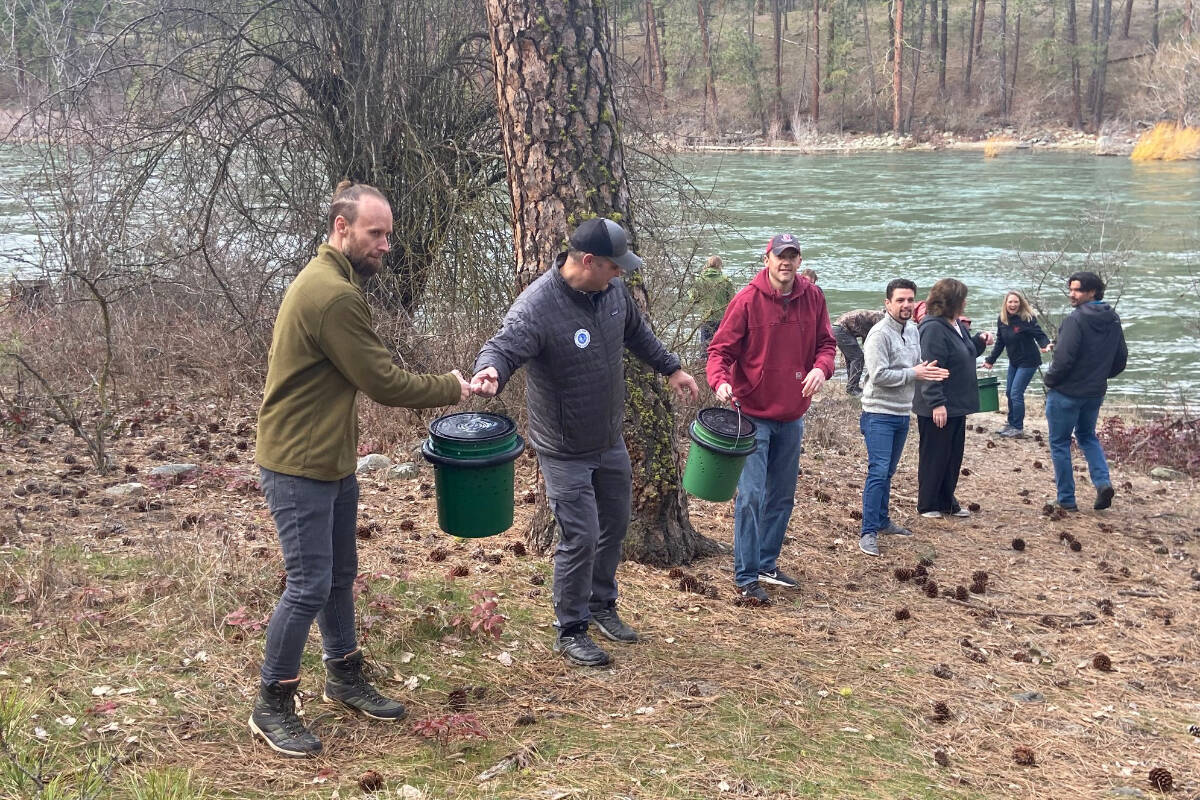Ever since the Grand Coulee Dam was constructed in the 1930s, salmon have been a rare sight in the Columbia River north of the U.S. border
But recent reports suggest salmon may indeed be back.
“Chinook Salmon are being encountered in recreational fisheries in the Columbia River between the US-Canada border and the Hugh Keenleyside Dam,” confirmed a spokesperson from the Ministry of Forest, Lands, Rural Development and Natural Resources.
“There is also a possibility some may have entered the Arrow Lakes via the navigation lock at Hugh Keenleyside Dam.”
The sightings come after provincial and federal governments joined the Syilx Okanagan, Ktunaxa, and Secwepemc Indigenous Nations in July 2019 in creating the “Columbia River Salmon Restoration Initiative – Bringing the Salmon Home.”
In the U.S., the Washington Department of Fish and Wildlife (WDFW) has been working with the Colville and Spokane Tribes to experiment with Chinook releases since 2017. The Coeur d’Alene Tribe also joined the effort and introduced 1,450 yearling Chinook salmon to the system in 2020.
This spring, WDFW and the Indigenous groups released over 4,500 juveniles from various locations in Lake Roosevelt, the Spokane River, Hangman Creek and below Grand Coulee and Chief Joseph dams.
“We believe the origin of these salmon are from a limited number of experimental juvenile hatchery releases into Lake Roosevelt from a U.S. Columbia salmon reintroduction program above Grand Coulee Dam, which is new within the last couple of years,” said the ministry.
Though the returns are promising, the ministry says salmon encounters won’t be a common occurrence. And those that are caught are likely to be on the smaller side, under 60 cm.
Over 3,900 of the juveniles were fitted with PIT tags and over 700 with acoustic tags for the outmigration study. Researchers will use that information to track fish behaviour and survival rates over the coming years.
Conor Giorgi, the Spokane Tribe of Indians Anadromous Program Manager, said in the Roosevelt Lake Forum that work is underway to create more salmon rearing facilities that will raise and release between 50,000 and 200,000 juvenile Chinook and sockeye for the summer and fall runs.
The plan also calls for trap-and-haul methods to move returning adults past one or more dams (Grand Coulee and Chief Joseph) that act as barriers on the Columbia River.
The studies undertaken by the U.S. are encouraging, and the ministry says that biologists in Canada will be working closely with U.S. to better understand how many fish might enter Canadian waters.
It is illegal to retain any Chinook salmon caught in the Columbia River and Arrow Lakes.
READ MORE: Conservation groups work to protect salmon in Columbia River
sports@trailtimes.ca
Like us on Facebook and follow us on Twitter

